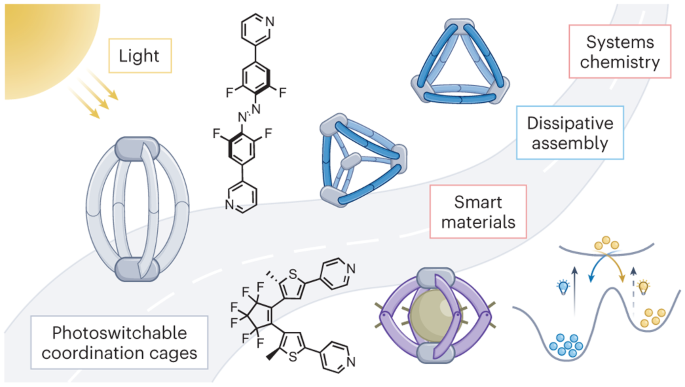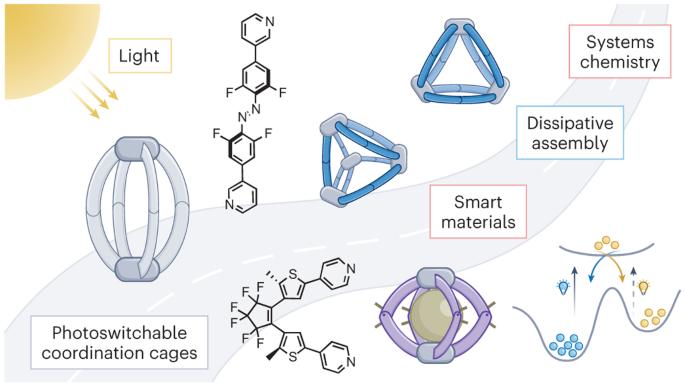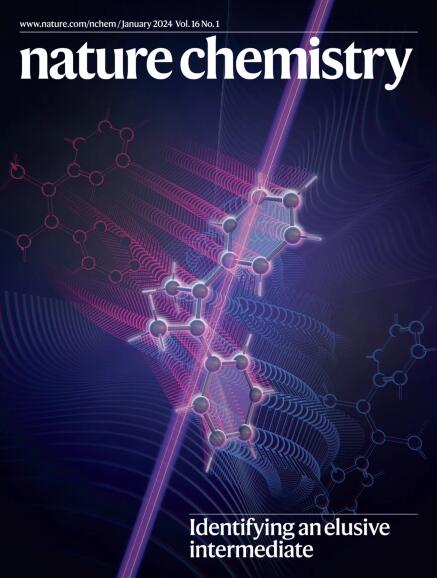光开关配位笼
IF 20.2
1区 化学
Q1 CHEMISTRY, MULTIDISCIPLINARY
引用次数: 0
摘要
刺激响应行为是设计智能材料、表面、纳米系统和效应分子的关键,可将其应用为可切换催化剂、分子传输器、生物成像探针或笼状药物。超分子化学因其精确的时空可寻址性和无废料特性,已广泛采用光开关。然而,在离散金属介导的自组装这一充满活力的领域,光开关仍很少被采用。直到最近才有研究表明,将光电开关嵌入配位笼的有机骨架可以控制其宿主和材料特性,从而释放出此类系统迄今为止尚未开发的动态适应性。在这里,我们讨论了触发配体集成光开关导致以下四种情况的发生:(1) 对分解/重组的控制;(2) 定义状态之间的双稳态切换;(3) 与可陨落系统中热过程的相互作用;(4) 光驱动的耗散性自组装。我们重点介绍了基本光物理与动态组装平衡之间关系的初步线索,并提出了未来的发展方向。本文章由计算机程序翻译,如有差异,请以英文原文为准。


Photoswitchable coordination cages
Stimuli-responsive behaviour is key to the design of smart materials, surfaces, nano-systems and effector molecules, allowing their application as switchable catalysts, molecular transporters, bioimaging probes or caged drugs. Supramolecular chemistry has embraced the widespread integration of photoswitches because of their precise spatiotemporal addressability and waste-free nature. In the vibrant area of discrete metal-mediated self-assembly, however, photoswitches are still rarely employed. Only recently has it been shown that embedding photoswitches into the organic backbones of coordination cages enables control of their host and material properties and thus unlocks the hitherto unexploited dynamic adaptivity of such systems. Here we discuss four cases where triggering ligand-integrated photoswitches leads to (1) control over disassembly/reassembly, (2) bi-stable switching between defined states, (3) interplay with thermal processes in metastable systems and (4) light-fuelled dissipative self-assembly. We highlight first clues concerning the relationship between fundamental photophysics and dynamic assembly equilibria and propose directions for future development. The self-assembly of stimuli-responsive building blocks yields functional nano-systems and smart materials. This Perspective discusses how the integration of photoswitches into discrete coordination cages enables control over their assembly, guest binding and systems behaviour. Four scenarios are drawn to highlight the relationship between the photoswitching and dynamic assembly equilibria.
求助全文
通过发布文献求助,成功后即可免费获取论文全文。
去求助
来源期刊

Nature chemistry
化学-化学综合
CiteScore
29.60
自引率
1.40%
发文量
226
审稿时长
1.7 months
期刊介绍:
Nature Chemistry is a monthly journal that publishes groundbreaking and significant research in all areas of chemistry. It covers traditional subjects such as analytical, inorganic, organic, and physical chemistry, as well as a wide range of other topics including catalysis, computational and theoretical chemistry, and environmental chemistry.
The journal also features interdisciplinary research at the interface of chemistry with biology, materials science, nanotechnology, and physics. Manuscripts detailing such multidisciplinary work are encouraged, as long as the central theme pertains to chemistry.
Aside from primary research, Nature Chemistry publishes review articles, news and views, research highlights from other journals, commentaries, book reviews, correspondence, and analysis of the broader chemical landscape. It also addresses crucial issues related to education, funding, policy, intellectual property, and the societal impact of chemistry.
Nature Chemistry is dedicated to ensuring the highest standards of original research through a fair and rigorous review process. It offers authors maximum visibility for their papers, access to a broad readership, exceptional copy editing and production standards, rapid publication, and independence from academic societies and other vested interests.
Overall, Nature Chemistry aims to be the authoritative voice of the global chemical community.
 求助内容:
求助内容: 应助结果提醒方式:
应助结果提醒方式:


